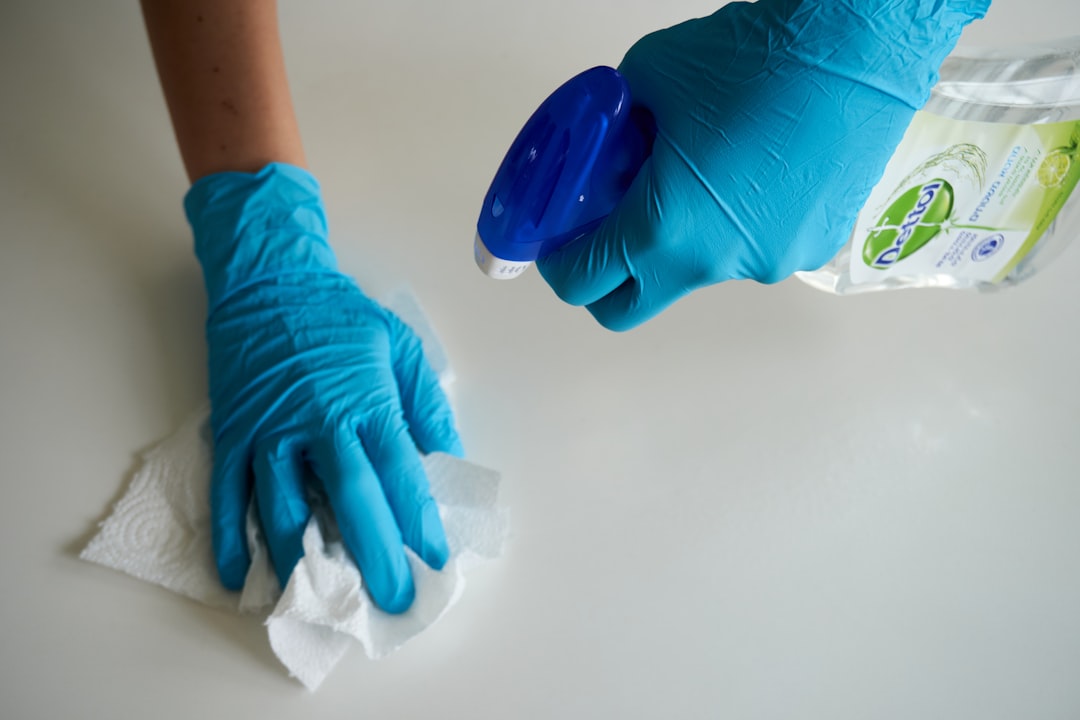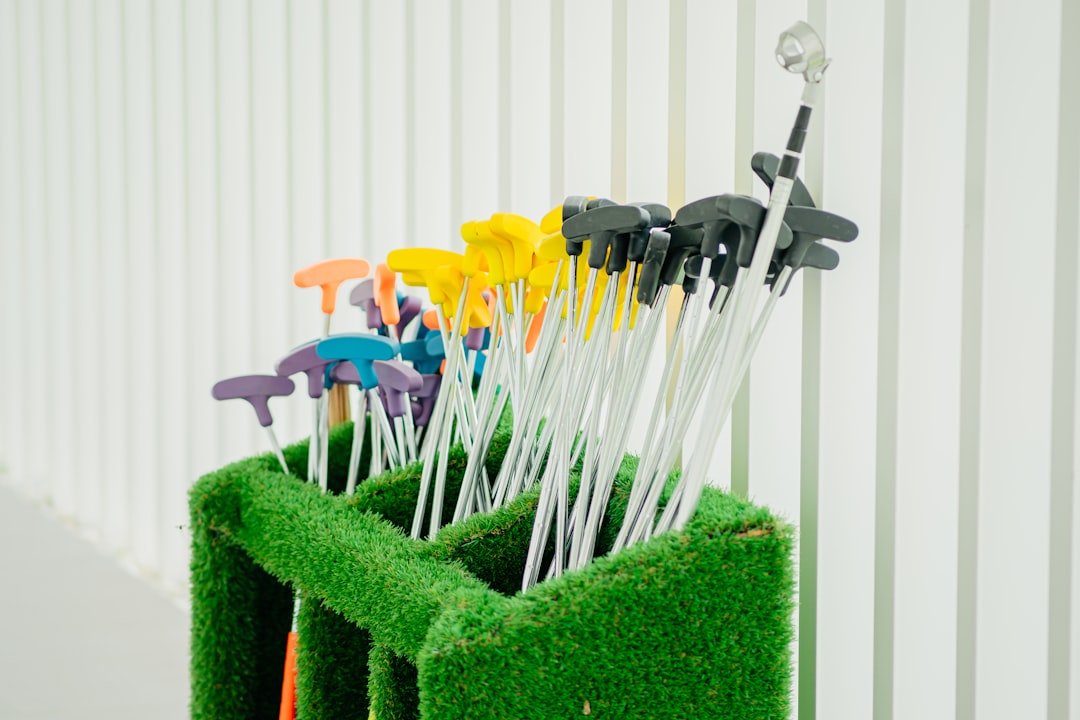

Engage prospects with a scan and streamline customer engagement with FREE QR code marketing tools by Sona – no strings attached!
Create a Free QR CodeFree consultation

No commitment

Engage prospects with a scan and streamline customer engagement with FREE QR code marketing tools by Sona – no strings attached!
Create a Free QR CodeFree consultation

No commitment
In today’s digitally driven world, QR codes have evolved from novelty to strategic powerhouse, bridging the physical and digital worlds for cleaning service businesses. QR codes offer a seamless way to connect offline interactions such as at a client’s property, on a janitorial team’s uniform, or on a service vehicle with online resources, bookings, and promotions. This is especially important as many providers struggle to consistently capture leads from fleeting, in-person encounters or materials that are not tracked in the CRM.
The power of QR codes is seen in their ability to trigger immediate engagement, allowing customers to book services, submit Google reviews, request quotes, or access digital business cards with a single scan. For teams that miss timely opportunities because leads are not captured until after a form is filled out or, worse, never at all, this provides a more direct path to action and data-driven decision-making. Enhanced visibility into brand interactions opens new doors for operational efficiency, client retention, and targeted marketing.
By adopting strategic QR code marketing, cleaning service companies can replace outdated workflows like manual sign-in sheets, printed forms, or exchanging business cards with dynamic digital interactions. This helps alleviate frustrations caused by disconnected campaigns and missed engagement signals, ensuring customer journeys are more convenient and valuable for both the business and the client. Below is a guide on how QR codes can elevate your cleaning brand by transforming everyday interactions into business growth. Explore how this works in Sona QR.

Many cleaning companies face the challenge of missed opportunities when potential clients engage with physical assets but never make it into a digital system. QR codes bridge the gap between on-site interactions and digital conversions, making it easier to capture interest that might otherwise slip through the cracks.
The most effective programs start with a clear definition of business goals and map QR placements to the places where customers already engage. Replace analog processes that slow decisions with QR-enabled interactions that are easy to scan and easy to measure. For example, swap paper appointment cards for QR links to a live scheduling page, or replace printed surveys with a scan-to-review workflow that posts to your preferred platforms via Google Forms QR.
Modern platforms like Sona QR simplify the end-to-end process, from code creation to analytics. With centralized management and integrations, cleaning teams can confidently deploy QR codes across many surfaces and channels while maintaining a single source of truth for performance.

Cleaning businesses often struggle with the disconnect between in-person brand exposure on flyers, uniforms, or vehicles and follow-up marketing or workflow automation. QR codes offer a direct pathway from physical engagement to digital action. A passerby who notices a vehicle wrap can scan and request a quote in seconds, or a homeowner can leave a review right from an invoice before your team departs. For campaign ideas, check out these creative ideas. Converting attention into action in the moment reduces leakage in your funnel and accelerates outcomes.
Dynamic QR codes solve a practical problem of change management. Printed materials often become outdated, which leads to stale offers or broken links. With dynamic codes, you can update destinations without reprinting. That flexibility is powerful for seasonal promotions, special offers for new neighborhoods, or switching from a quote form to a holiday discount landing page. You also gain the ability to test different offers and calls to action while reusing the same physical asset.
Trackability is another reason QR codes matter. Traditional print assets provide limited insight into performance. QR analytics reveal when and where people engage and which devices they use. You can attribute bookings and reviews to specific placements like door hangers, invoices, or building lobby signage. For strategy and measurement fundamentals, see Sona’s offline attribution guidance. This transparency helps you shift budget to high-performing assets and refine underperforming placements until they contribute.
Finally, QR codes are low cost and easy to scale. You do not need an app or developer resources to deploy. That accessibility puts sophisticated marketing and operational workflows within reach for cleaning businesses of any size, from solo operators to multi-location commercial janitorial companies.

QR codes are flexible and can support a wide range of experiences your customers need. Selecting the right format ensures each scan guides someone to the most useful destination and reduces friction. In cleaning services, some formats show especially strong results because they align with common customer tasks like requesting a quote, booking an appointment, or providing feedback.
For operational efficiency, think beyond marketing. Field teams can use QR codes to access site-specific checklists, safety protocols, or Wi-Fi credentials on arrival. This improves compliance, reduces delays, and keeps records centralized. Meanwhile, customer-facing formats simplify rebooking and referrals, which directly affect lifetime value. See how this applies to janitorial teams in this overview of work management.
With Sona QR, you can generate and manage all of these formats in one place, use dynamic destinations to keep content current, and view analytics across every code and campaign.
QR codes work best where your audience already encounters your brand. For cleaning services, that includes everyday assets customers touch and high-visibility surfaces that reach new prospects. By mapping placements to natural moments of intent, you systematically turn offline attention into measurable pipeline.
Prioritize placements that align with decision points. Put rebooking and feedback flows where customers interact right after service. Place quote and promo offers where prospects are most likely to notice you in their neighborhood or building. Use operational touchpoints to reduce friction, such as job site signage that connects facility managers to checklists and escalation paths.
As you test placements, use unique codes by channel and location. Over time, you will see which surfaces and messages generate scans, quotes, and revenue, allowing you to invest where returns are highest.

The most effective applications solve specific problems: faster response, better data, and more convenient customer journeys. Below are core use cases that consistently improve results for residential and commercial cleaning providers.
Across these use cases, measurable improvements typically include more scans per placement, higher form completion rates, and better attribution of bookings to the surfaces and campaigns that drove them. The key is making the next step obvious and simple.
Each QR scan is a valuable signal. It captures interest, context, and sometimes intent strong enough to convert quickly. By deploying unique codes for different use cases and placements, you can segment audiences automatically and follow up with tailored messaging that reflects what someone scanned and where they scanned it.
Cleaning providers benefit from segmenting by journey stage and environment. For example, a scan on a lobby poster during business hours likely reflects a commercial facility manager, while a weekend scan from a door hanger suggests a homeowner. Use these distinctions to deliver relevant offers and content, such as commercial service bundles versus residential deep clean promotions.
For audience strategy beyond scans, learn how buying signals drive outcomes in Sona’s overview of intent data, and turn those signals into action with this retargeting playbook. When your retargeting aligns to real-world behavior rather than assumptions, you waste less budget and close more business. Over time, this segmentation feeds a virtuous cycle of smarter creative, better placements, and higher ROI.
QR codes act as connectors across your offline and digital programs. They bring trackability and interactivity to print materials and physical surfaces, while also enhancing digital campaigns through short-lived moments of attention in the real world. The result is a connected funnel where a scan can kick off a booking, a nurture sequence, or a customer service workflow, all while preserving attribution.
Cleaning services typically rely on local reach and repeat business. That makes cohesive messaging crucial across vehicles, neighborhood marketing, and commercial account communications. QR codes provide the glue that ties it all together and provides the data you need to decide where to spend the next dollar.
A centralized platform like Sona QR helps you manage codes across all channels, monitor performance, and sync scan data with your CRM and ad tools so every scan contributes to a complete customer journey.
For many cleaning businesses, manual collection of feedback, lead details, and service requests causes delays and missed revenue. A structured rollout plan makes QR-enabled workflows simple to launch, measure, and improve. Use the steps below to plan and execute with confidence.
Treat this as a repeatable process. Start small in a single neighborhood or within one commercial account, then expand based on what your analytics reveal. As you scale, standardize your QR look and feel and document the playbook your team follows for deployment and follow-up.
Begin with one clear outcome. Examples include collecting more Google reviews, accelerating quote requests during peak season, or streamlining on-site protocol access for commercial clients. The more specific your goal, the easier it is to pick the right placements, set KPIs, and decide what the landing experience should be.
Translate objectives into metrics and timelines. If your goal is more reviews, define targets such as review count per week and average rating. If you want more bookings, specify booking conversion rate and time from scan to scheduled appointment. Align these targets with revenue goals so you can judge impact rather than activity.
Choose static codes for fixed destinations like a safety PDF, and dynamic codes for anything you may want to change or track. Dynamic codes enable edits after printing, A/B testing of offers, and detailed analytics. In most marketing scenarios such as quotes, bookings, and reviews, dynamic is the better choice.
Pair the code type with the destination that best fits the task. For quotes, a mobile-optimized form or calculator is ideal. For rebooking, a calendar link with preselected service types reduces clicks. For on-site needs, a short landing page with icons for checklists, issue reporting, and supply reorders makes navigation fast in the field.
A QR code that looks good but does not scan on a moving vehicle or dimly lit lobby will not perform. Use high-contrast colors, adequate size for the expected distance, and a clear frame with a call to action. Place short, benefit-driven copy next to the code, such as “Scan for a 2-minute quote” or “Scan to report a facility issue.”
Test in real conditions. Check smartphones with different cameras, try various angles, and test glare on laminated materials. For vehicles, have someone scan from a sidewalk and at a stoplight distance. For uniforms, verify that codes remain scannable when fabric folds. Adjust size and contrast until scan success is reliable.
Roll out codes where you already have reach. Start with invoices and receipts for feedback and rebooking, vehicles for quotes, and lobby signage for commercial clients. Add door hangers in targeted neighborhoods and uniform patches for team members who interact directly with customers. See vehicle QR codes for execution ideas.
Use unique codes for each placement so you can attribute results. Label them by channel and location, such as “Van-Route-3” or “Lobby-Building-A.” This granularity shows which assets and routes generate the most scans and conversions, which guides your next investments.
Measure scans, click-through rates, and downstream conversions weekly. Attribute bookings, reviews, and reorders to the codes that drove them, then shift budget toward top performers. If a code gets scans but few conversions, optimize the landing page or CTA. If scans are low, improve visibility or experiment with placement and copy.
Close the loop by syncing data to your CRM. Trigger automated follow-ups, assign leads to the right rep or dispatcher, and record revenue against the originating QR source. Tools like Sona QR and Sona’s pipeline influence framework make it easier to track performance, unify data across assets, and tie scans to closed-won revenue for full-funnel insight.
A major frustration for cleaning operators is not knowing which activities truly drive bookings and retention. Capturing a scan is only the beginning. What matters is connecting that scan to downstream actions like quote submissions, scheduled appointments, reviews, and reorders. When you can follow that path, you gain clarity on where to invest and what to fix.
Effective analytics include both scan-level data and business outcomes. Scan-level data tells you when and where engagement happens and which devices people use. Outcome data ties those interactions to booked jobs, revenue, retention, and lifetime value. Together they reveal the levers that increase return on every printed piece and branded asset.
Platforms such as Sona QR centralize these insights and pair scan analytics with multi-touch attribution from Sona.com, including perspectives on revenue attribution. This enables teams to see how offline interactions contribute to pipeline and closed revenue, not just engagement.
Scaling QR programs requires both good creative and disciplined operations. Strong visual design and CTAs drive scans, while integrated systems ensure that those scans lead to outcomes you can measure. The goal is simple: make the next action easy and the data useful.
Plan to iterate. Early data will show which placements pull the hardest. Build on those wins and sunset underperformers. As you learn, standardize your QR styling, CTA language, and landing page templates so every new deployment benefits from past tests.
You can generate and track your first codes quickly with Sona QR. Start with one or two use cases such as reviews and quotes, then expand into operations and retargeting as your team builds momentum.

Imagine a janitorial firm that placed “Scan to report an issue” stickers inside restrooms and common areas at a large office complex. Facility staff scanned codes to submit photos and notes, which automatically created tickets and notified the cleaning supervisor. Response times dropped, time-to-resolution improved, and the client expanded the contract due to the increased transparency and speed.
A residential cleaning brand added “Scan for a 2-minute quote” to vehicle wraps and door hangers. Prospects answered three questions, received a ballpark estimate, and booked a home visit. The brand saw a clear lift in quotes from neighborhoods where vehicles frequently parked and from mail routes with the updated door hanger creative. They reallocated budget accordingly and optimized the estimate flow for higher conversion.
These examples share a pattern: place QR codes where intent exists, make the next step obvious, and tie scans to workflows that deliver value immediately. The creativity lives in matching the code to the customer’s moment.
Success with QR codes often hinges on practical details. Visibility, scannability, and landing page quality matter as much as the offer. Small oversights can depress scan rates or cause drop-offs after the scan, which undermines trust and results.
Printing and environment conditions also matter. Codes on glossy surfaces can glare under lighting. Uniform codes can fold or blur. Vehicle codes need larger size and stronger contrast to be scannable from a distance. Field testing uncovers these issues early.
When teams build a habit of testing and iteration, QR codes become a dependable part of growth and operations rather than a one-off tactic.
For cleaning services, QR codes present more than operational efficiency. They deliver a connected, measurable customer experience that turns every physical surface into an entry point to your brand. From a quick scan to a booked appointment or a resolved issue, you reduce friction, capture intent, and learn where your marketing and operations create the most value.
The path to success is straightforward. Start with one or two high-leverage use cases like post-service reviews and instant quotes, deploy unique QR codes across your most visible assets, and track outcomes from scan to revenue. With a centralized platform such as Sona QR for code creation and Sona.com for attribution, you can unify offline and online touchpoints, automate follow-ups, and prove impact with confidence.
QR-driven strategies turn everyday client interactions into data-rich, actionable moments for cleaning businesses. By implementing QR codes thoughtfully across marketing and operations, you can overcome persistent challenges like missed prospect capture, anonymized engagement, and campaign disconnects. This leads to more efficient workflows, sharper analytics, and happier clients that stay longer and spend more. Start creating QR codes for free.
QR codes have transformed the cleaning services industry by enabling seamless access to service details, schedules, and customer feedback, turning routine interactions into efficient, measurable engagements. Whether it’s streamlining client onboarding, enhancing service transparency, or enabling instant access to maintenance records, QR codes replace outdated manual processes with instant, mobile-friendly solutions that improve both operational efficiency and customer satisfaction.
Imagine your clients effortlessly scanning a code to view their personalized cleaning schedule or provide real-time feedback, all while you track engagement and optimize your services accordingly. With Sona QR, you can create dynamic, trackable QR codes in seconds, update campaigns instantly without reprinting, and directly link every scan to meaningful business outcomes. No missed opportunities, just smarter, more effective customer connections.
Start for free with Sona QR today and transform every scan into a gateway for stronger client relationships and business growth.
QR codes in cleaning services connect physical interactions like vehicles, uniforms, and invoices to digital actions such as booking services, requesting quotes, submitting reviews, and accessing operational checklists.
QR codes increase customer engagement, improve lead capture, enable real-time data collection, enhance operational efficiency, provide trackable marketing insights, and offer flexible updates without reprinting materials.
By placing QR codes on high-visibility assets with clear calls to action, using dynamic codes to keep content relevant, training staff to promote scanning, and automating timely follow-ups after scans.
Creative integrations include QR codes on vehicle wraps for instant quotes, name badges with digital business cards, invoice-backed review prompts, restroom issue reporting stickers, and door hangers linking to personalized landing pages.
QR codes provide scan-level data such as time, location, and device, link engagement to outcomes like bookings or reviews, enrich CRM records, and enable multi-platform integration for comprehensive analytics.
Use Sona QR's trackable codes to improve customer acquisition and engagement today.
Create Your FREE Trackable QR Code in SecondsJoin results-focused teams combining Sona Platform automation with advanced Google Ads strategies to scale lead generation

Connect your existing CRM

Free Account Enrichment

No setup fees
No commitment required

Free consultation

Get a custom Google Ads roadmap for your business






Launch campaigns that generate qualified leads in 30 days or less.
